
USS Tilefish (SS-307), a Balao-class submarine, was the only ship of the United States Navy to be named for the tilefish, a large, yellow-spotted deepwater food fish.

USS Scabbardfish (SS-397), a Balao-class submarine, was the only ship of the United States Navy to be named for the scabbarddfish, a long, compressed, silver-colored fish found on European coasts and around New Zealand. In 1965 she was transferred to the Hellenic Navy and renamed Triaina.
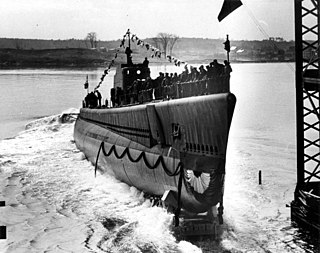
USS Kingfish (SS-234), a Gato-class submarine, was the first ship of the United States Navy to be named for the kingfish.

USS Rock (SS/SSR/AGSS-274), a Gato-class submarine, was a ship of the United States Navy to be named for the rockfish, a striped bass found in the Chesapeake Bay region and elsewhere along the United States East Coast.

USS Sawfish (SS-276), a Gato-class submarine, was a ship of the United States Navy named for the sawfish, a viviparous ray which has a long flat snout with a row of toothlike structures along each edge. It is found principally in the mouths of tropical American and African rivers.
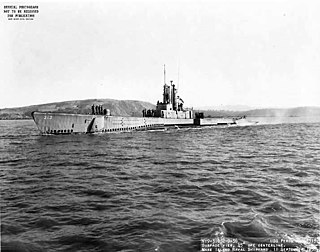
USS Perch (SS/SSP/ASSP/APSS/LPSS/IXSS-313), a Balao-class submarine, was the second submarine of the United States Navy to be named for the perch, a freshwater spiny-finned fish.

USS Becuna (SS/AGSS-319), a Balao-class submarine in commission from 1944 to 1969, was ship of the United States Navy named for the becuna, a pike-like fish of Europe. During World War II, she conducted five war patrols between August 23, 1944 and July 27, 1945, operating in the Philippine Islands, South China Sea, and Java Sea. She is credited with sinking two Japanese tankers totaling 3,888 gross register tons.
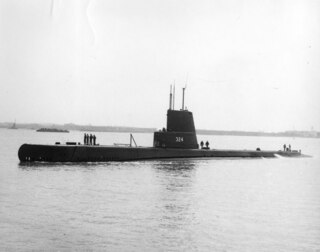
USS Blenny (SS/AGSS-324), a Balao-class submarine in commission from 1944 to 1969, was a ship of the United States Navy named for the blenny, a fish found along the rocky shores of the Atlantic Ocean. During World War II, Blenny conducted four war patrols in the Java Sea and South China Sea between 10 November 1944 and 14 August 1945. She sank eight Japanese vessels totaling 18,262 tons. In addition, she is credited with destroying more than 62 miscellaneous Japanese small craft by gunfire.

USS Brill (SS-330), a Balao-class submarine, was a ship of the United States Navy in commission from 1944 to 1947. She was named for the brill, a European flatfish.

USS Bumper (SS-333), a Balao-class submarine, was a ship of the United States Navy named for the bumper, a small fish of the North and South Atlantic Ocean.

The first USS Parche (SS-384/AGSS-384) was a United States Navy submarine. She bore the name of a butterfly fish, Chaetodon capistratus. Parche was a Balao-class submarine that operated in World War II.
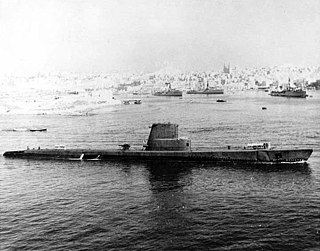
USS Lizardfish (SS-373), a Balao-class submarine, was a boat of the United States Navy named for the lizardfish, a slender marine fish having a scaly, lizard-like head and large mouth.

USS Guavina (SS/SSO/AGSS/AOSS-362), a Gato-class submarine, was a ship of the United States Navy named for the guavina, a fish which may reach a length of 2 feet (0.6 m) indigenous to the West Indies and the Atlantic coasts of Central America and Mexico.

USS Guitarro (SS-363), a Gato-class submarine, was the first ship of the United States Navy to be named for the guitarro.

USS Hammerhead (SS-364), a Gato-class submarine, was the first ship of the United States Navy to be named for the hammerhead shark, a shark found in warm seas with a flattened anterior forward of the gill slits, presenting a hammer-like silhouette when viewed from above.

USS Lamprey (SS-372), a Balao-class submarine, was a ship of the United States Navy named for the lamprey, any of certain eel-like aquatic vertebrates.

USS Loggerhead (SS-374/AGSS-374), a Balao-class submarine, was a ship of the United States Navy named for the loggerhead, Caretta caretta, a very large, carnivorous sea turtle common in the warmer parts of the Atlantic, Pacific, and Indian Oceans.

USS Pilotfish (SS-386), a Balao-class submarine, was a ship of the United States Navy named after the pilot fish, a carangoid fish, often seen in warm latitudes in company with sharks.
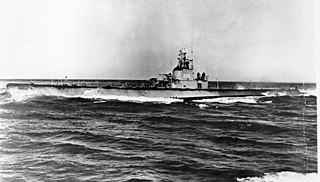
USS Cobia (SS/AGSS-245) is a Gato-class submarine, formerly of the United States Navy, named for the cobia.
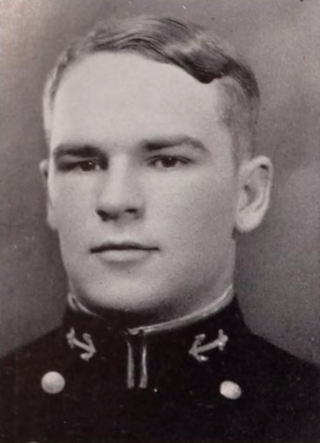
Alan Boyd Banister was a decorated submarine commander during World War II who reached the rank of Rear Admiral in the United States Navy.





















